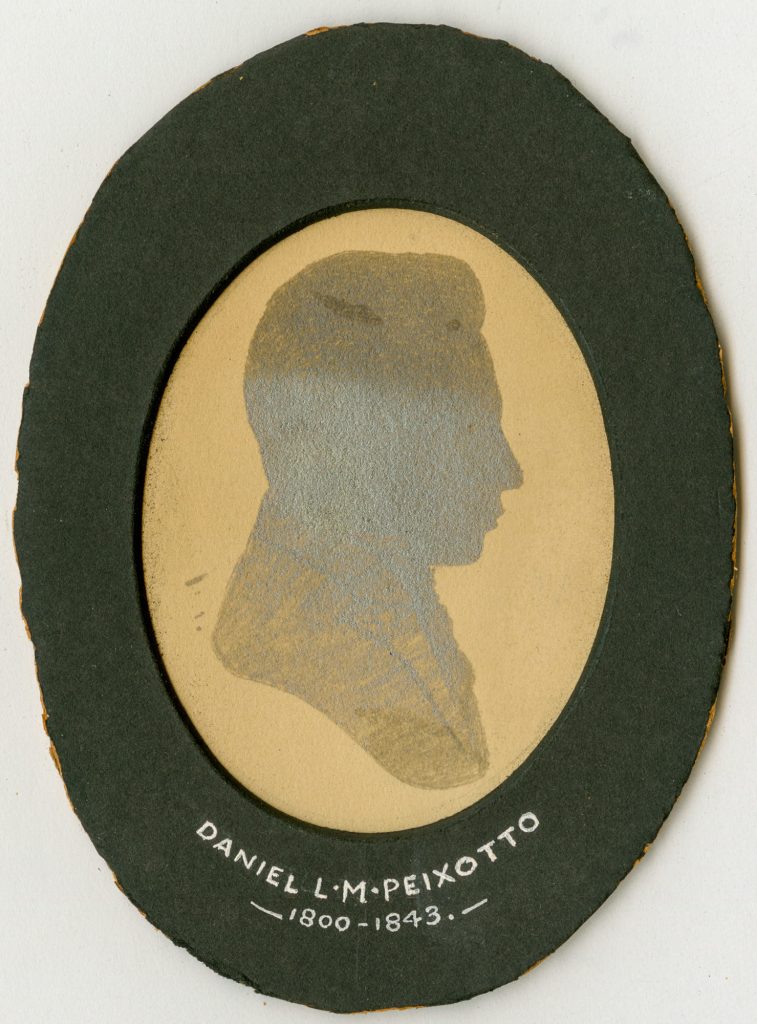The Maduro Peixotto family, Dutch Sephardim, had been living in Curacao for several generations by the time Daniel was born. His father, Moses Levy Maduro Peixotto, described as “a dark featured, square-built, middle-sized man, greatly addicted to snuff taking,” had had two children with his first wife, Rachel de Isaac Jessurun Sasportas. Following Rachel’s death in 1793, Moses travelled to Amsterdam, where, in 1797, he married Judith de Samuel Lopez Salzedo. Two years later, still in Amsterdam, Daniel was born, and three more children would follow after the family’s return to Curacao in the first years of the nineteenth century.
On June 11, 1807, Moses, Rachel and the six children would arrive in New York. Moses quickly established himself as a merchant, became involved with freemasonry, and served on the board of trustees of Shearith Israel. A close friend of Gershom Mendes Seixas, Moses, after the latter’s death in 1816, took up many of the duties of the office of hazzan at Shearith Israel. The competing demands of business and Jewish communal life proved irreconcilable, and in 1820 Moses wrote to the board of trustees: “I hold it undignified to continue the duties of hazan with that of a merchant … now must make my election either to offer myself as Hazan of this congregation or return to the pursuits of commerce. I do not hesitate to say that I prefer the former.” But Peixotto had done quite well for himself in commerce, and it was not the hazzan’s salary he was after. Indeed, he wrote that he would take the post only on the condition that the salary go to the family of his friend and predecessor, Geshom Mendes Seixas.
It did not take the board long to agree, and Moses officiated for four years, his service to the community widely appreciated, despite the fact that he could not carry a tune. Daniel would characterize such his father’s turn as hazzan: “occasional Discourses on moral and Religious Subjects were composed with a facility derived in part from a familiar acquaintance with the language of the Scriptures and from native strength of intellect; but an irrepressible enthusiasm for the cause in which he labored had by far the greater share.” Rebecca Gratz observed that, “the humble yet dignified figure of the venerable Mr. Peixotto has since his clerical appointment studied and become as learned as he is intelligent.”
When he passed away in 1828, his funeral was attended by the entire community, and his eulogy given by Mordecai Manuel Noah.
The younger Peixotto shared his father’s love of learning. Daniel graduated Columbia College at age sixteen and by nineteen had earned his Doctor of Medicine. He spent several years in the Caribbean, where in addition to his work as a physician, Daniel developed an interest in research, publishing “Observations on the Climate and Diseases of the Island of Curacao” in 1822 in The New York Medical and Physical Journal, the first English language quarterly medical journal. The following year in New York he married Rachel Seixas, daughter of Benjamin Mendes and Zipporah Levy Seixas, and they would have eight children. In 1825 he received a masters degree from Columbia and in 1828 he became a freemason.
Daniel’s medical career proved full of accomplishments, and he became a pioneer in the filed of preventive medicine. From 1825 he served in an editorial capacity at the New York Medical and Physical Journal, and in 1829 and 30 as the sole editor. He worked as a physician at the New York City Dispensary, served as president of the New York County Medical Society from 1830–1832, and revised George Gregory’s medical textbook, Elements of the Theory and Practice of Physic in 1830. He served on several regulatory committees that sought to establish standards and guidelines for medical practice. He was appointed professor of the theory and practice of medicine and obstetrics at the newly established Willoughby Medical College in Columbus, Ohio, returning to New York in 1841, where he died of consumption two years later.
